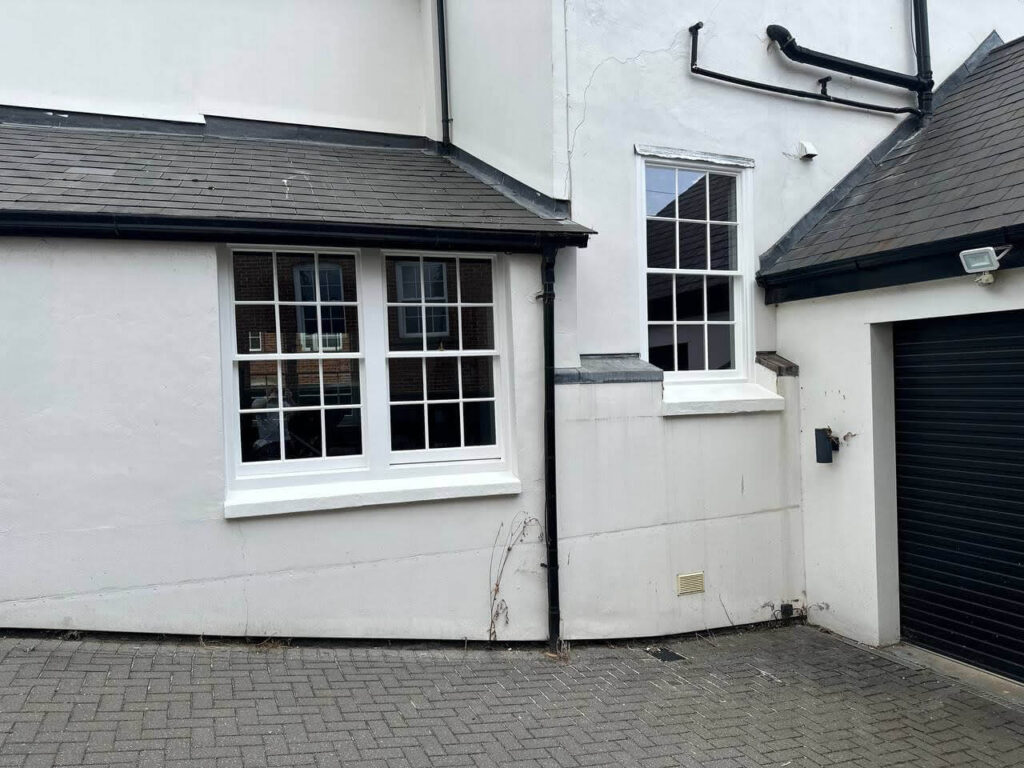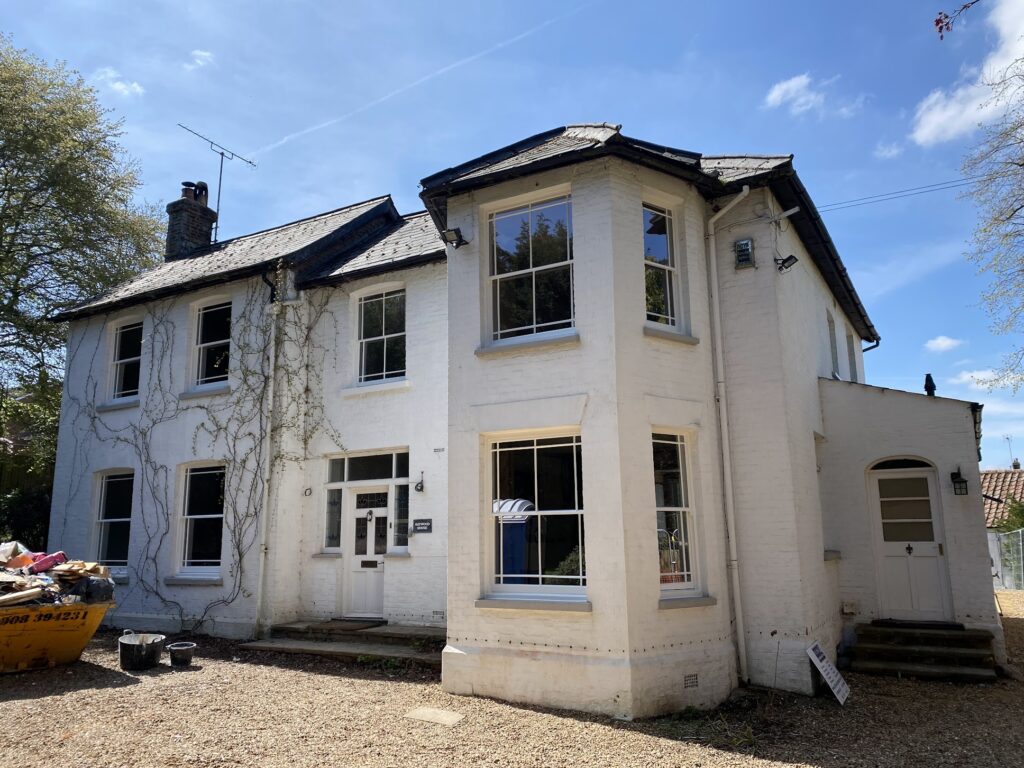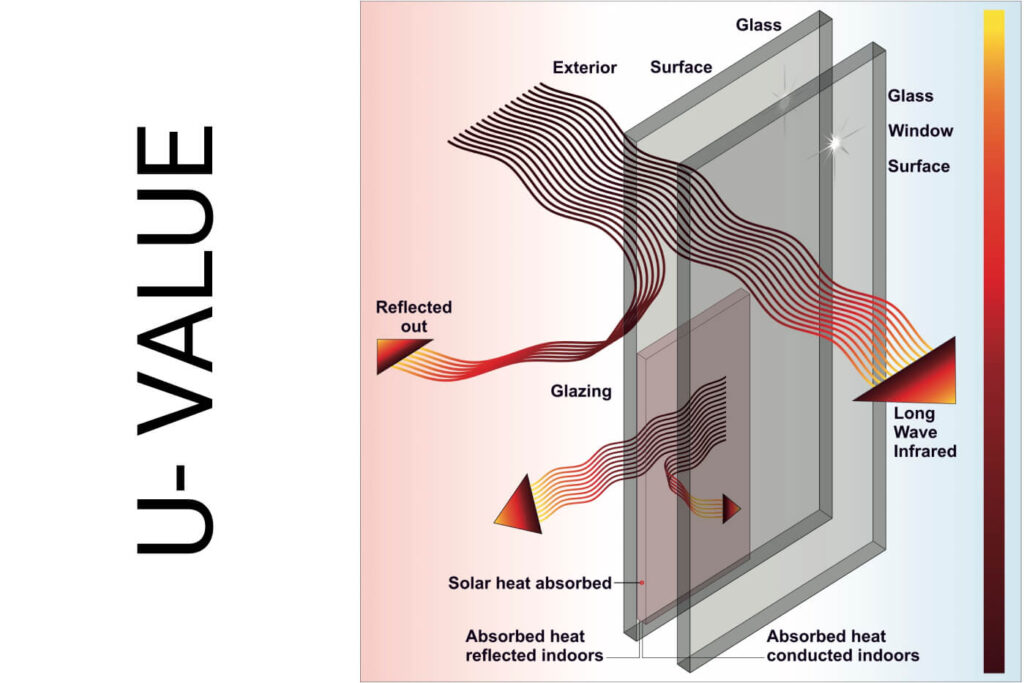
The danger of glass
We all know the dangers that come with glass, as it can be a very harmful material when it breaks. Shards of glass can be very dangerous and cause severe harm to people.
Over the years, glass has generally become much stronger and double glazing reduces the likelihood of smashed glass, but of course, it will never be completely safe from breaking.

However, the development of safety glass has allowed us to reduce the impact that broken glass can have and makes our living environments much safer and protects people from the dangers of broken glass.
This blog will tell you all about safety glass, including what it is, where you need it, and the different types you can get. Let’s start by explaining what safety glass is.
What is safety glass?
Safety glass is a type of glass that is toughened and made stronger to protect people and is designed to reduce the chances of injury if it breaks or smashes.
The purpose of safety glass is to keep people safe in the case of an accident, and it helps to reduce the risks that come with broken glass, either through prevention or damage limitations.
What Is Safety Glass Used For?
Safety glass is employed in any area deemed a ‘critical location’ where there is a risk that if the glass breaks, it could cause serious harm and injury. Its primary purpose is to enhance safety by reducing the likelihood of injury when breakage occurs. Here are the main applications of safety glass:
- Safety glass is used in windows that are installed at low levels, typically below 800mm from the floor, to protect against accidental impacts.
- All glazed areas within doors, especially those below 1500mm from floor level, must be made from safety glass to prevent injury in case of accidental breakage.
- Safety glass is used in balustrades, ensuring the glass panels are strong enough to withstand impacts and prevent falls in stairways and balconies.
- In modern architectural designs, glass stairs often feature safety glass to provide the necessary strength and durability while maintaining a sleek appearance.
- Safety glass is used in glass flooring applications, offering a robust solution that can handle the weight and stress of foot traffic while preventing injury.
- Items such as shower screens, tables, and worktops are made from safety glass to minimize the risk of injury from broken glass in high-use areas.
Three types of safety glass
All safety glass isn’t the same and can be split down into three different types, laminated, toughened and wired. All of these have different qualities and reduce the risk of any breakage to keep you safe.
Laminated Glass
There are two ways in which you can create safety glass, and the first is through lamination. Laminated glass is when two or more layers of glass are sandwiched together by an extremely tough plastic interlayer.
This is often used on car windscreens.
The plastic interlayer holds the smashed glass in place so that the glass doesn’t smash as easily and keeps the fragments in place.
This reduces the damage and stops shards from falling from the glass, and keeps it in place, providing time for a replacement to be found.
Toughened Glass
Toughened glass, otherwise known as tempered glass, is a much stronger alternative to an annealed and laminated glass of the same thickness.
The glass is made from the tempering process, which is when it is repeatedly exposed to intense heating followed by rapid cooling to increase the strength and toughness of the glass. This means it has a much greater resistance to breakage and a higher load and needs to be hit a lot harder to break than standard glass.
Whereas laminated glass holds in place when it breaks, toughened glass is designed to break up into thousands of tiny fragments. This reduces the risk of injury as the smaller pieces are much smaller, and it means the glass isn’t broken into jagged fragments, which can cause injury.
What Is the Difference Between Toughened and Laminated Glass?
Toughened glass and laminated glass are different types of safety glass, each with unique characteristics and applications. Here is a comparison to help you understand their differences and uses.
Laminated Glass:
Structure
Laminated glass consists of two or more layers of glass with a polyvinyl butyral (PVB) interlayer. This construction ensures that if the glass is broken, the fragments remain bonded to the interlayer, providing additional safety.
Safety
The PVB layer prevents the glass from shattering completely, reducing the risk of injury from flying shards. It is highly effective in applications requiring high security and durability.
Applications
Commonly used in car windscreens, skylights, and areas requiring added security and sound insulation, such as banks, schools, and high-rise buildings. Compliance with laminated glass building regulations ensures these applications meet necessary safety glasses standards.
Advantages
Laminated glass offers superior sound insulation, UV protection, and added security. It remains intact even when broken, which is crucial for preventing injuries and maintaining a barrier.
Drawbacks
It is generally more expensive than toughened glass and may have less visual clarity.
Best For
Applications where strength and impact resistance are crucial, such as doors, shower screens, and glass partitions. It is also suitable for areas with high human traffic where safety is a top priority.
Considerations
Choose toughened glass for cost-effective solutions that require high strength and safety. It is not suitable for areas needing sound insulation or UV protection.
Toughened Glass:
Structure
Toughened glass is produced by heating standard glass to high temperatures and then rapidly cooling it. This process creates a compressive stress on the surface, making it significantly stronger than untreated glass.
Safety
When broken, toughened glass shatters into small, blunt pieces, reducing the risk of serious injury. It is ideal for use in high-impact areas where safety is a concern.
Applications
Often used in doors, shower screens, glass partitions, and other locations where human impact safety is important. It is also used in windows up to 800mm from the ground and 1,500mm for doors with glazing, in compliance with toughened glass regulations.
Advantages
Toughened glass is much stronger than regular glass, more affordable than laminated glass, and provides excellent impact resistance.
Drawbacks
It does not offer the same level of sound insulation or UV protection as laminated glass.
Best For: Situations where security, sound insulation, and UV protection are essential, such as car windscreens, skylights, and high-security areas. It is also ideal for environments that require the glass to stay intact after breaking.Considerations: Opt for laminated glass in scenarios requiring enhanced protection against break-ins and where maintaining structural integrity after breakage is critical. It is suitable for reducing noise and protecting against UV rays.
Wired Safety Glass
Wired safety glass is made when a wire mesh is embedded into the glass during production to reinforce it.
Like laminated glass, the wire mesh helps retain the glass and stops it from going everywhere.

Wired safety glass is also popular because it is fire rated and is often found in places such as schools and universities.
Where is safety glass required?
There are many places in a UK home where Building Regulations require you to have safety glass to protect people from injuries. Here is where you will need safety glasses in the home.
Door glazing
Glass which is partially within 1500mm of floor level, must be safety glass. This means that glazing found in doors usually needs to be made from safety glass.
Glazing adjacent to doors
The same rule for height applies to door sidelights as glazing adjacent doors which are less than 1500mm from the floor must be safety glass. Also, glazing which is wholly or partially within 300mm of the edge of a door must be safety glass too. This means that sidelights will always need to be made with safety glass to help protect homeowners from injury.
Low-level glazing
Another glazing, which is 800mm from floor level. This includes windows that aren’t 300mm from a door but are less than 800mm from the floor must use safety glass.
Bathroom areas
Bathroom areas also need safety glass as there is a risk of slipping on wet surfaces and a potential for damage to be caused. This means that all glazed features in bathrooms, such as shower screens and mirrors, must be made from safety glass.
Protective Barriers
Protective barriers are balconies and balustrades, which are often found on landings and stairways, and must also be safety glass due to them being in areas of heavy footfall.
Furniture and Cabinets
All glass furniture must have safety glass, which could include tables, cabinets, shelving units as well as mirrors. You may have noticed if you’ve ever broken a mirror or glass table that safety glass is normally used to keep people safe.
Other critical locations
While these are the required safety glass locations in normal households and domestic settings, some places should consider making all of their glass safety glass.
In places of high risk, such as schools, gyms, and colleges, it’s recommended that all planes use safety glass in order to keep those people safe. Compliance with internal doors safety glass regulations is crucial to ensure maximum protection in these areas.
How do I identify safety glass?
You may be in a situation where you moved into a property, and the windows or certain glazed areas were already there and you have no idea whether they are made using safety glass or not, or you may simply be unable to remember.
It’s easy to tell if it’s safety glass once it has been smashed, but that is of course, not an appropriate way of checking.
If you are unsure whether or not it is safety glass, there are a few things that you can check to see if it is or not.
Safety mark
The easiest way of finding out is if there is a safety mark on the pane of glass. The manufacturer’s logo and name should be on the glass, with a reference to a relevant product standard. For toughened glass, this is BS EN 12150, and for laminated glass, this is BS EN 14449.
If you can see this on the pane, then you know that it is made using safety glass.
Check the edges
If this logo is not present on the glass, then you can check the edges to see whether or not it is safety glass. Carefully run your finger along the edge, and if it is smooth and rounded, then it is likely to be toughened glass.
Look for imperfections
If you can see slight dimples, warping or bending of the glass, then this may be a good sign. These signs can occur in the healing process of tempered glass production and mean it is very likely that it is safe glass. The marks come from the tongs used during the healing process.
Tempered glass may also have very light scratches on it. This comes from small particles from the roller machine used in the tempering process melting and fusing into the surface of the glass. The debris gets dragged around the glass and causes light scratches.
View through polarised lenses
If you look at the glass with polarised sunglasses on, dark, shady spots will appear on the surface, which is a clear sign that the glass is tempered, as the lines were formed from the machine during the tempering process.
FINEO safety glass
FINEO glass is a revolutionary glazing system that uses vacuum technology to produce insulation results that outperform triple glazing. It also allows the glazing to be ultra-thin which makes it the perfect product for older buildings looking to replace their single glazed windows.
These buildings still need to comply with building regulations, so safety glass should still be installed on older buildings. FINEO Safety helps protect people from injury and keeps people safe.
It is laminated on the inside and outside, meaning there is no risk of injury to people in the event of a breakage, making it ideal for those needing safety glass for their heritage project. FINEO safety still performs extremely well for efficiency and matches triple-glazed alternatives despite being three times thinner.
Choose Scott James for your safety glass needs.
At Scott James Sash Windows, we are experts in the restoration and repair of sash windows, which includes reglazing. We specialise in providing modern solutions to those looking to maintain the traditional character of their sash windows and heritage properties.
As official suppliers of FINEO glazing, we can offer a modern alternative to traditional glazing styles, which delivers incredible performance results, ensuring your home is kept warm all year round.
With FINEO safety, we can also help those people looking for a glazing solution that reduces the risk of breakage for sash windows on traditional properties.
Read more articles

What is the thinnest double-glazing?
What is the thinnest double-glazing?
The guide to choosing shutters for sash windows
The guide to choosing shutters for sash windows
What is Vacuum Double Glazing?
What is Vacuum Double Glazing?